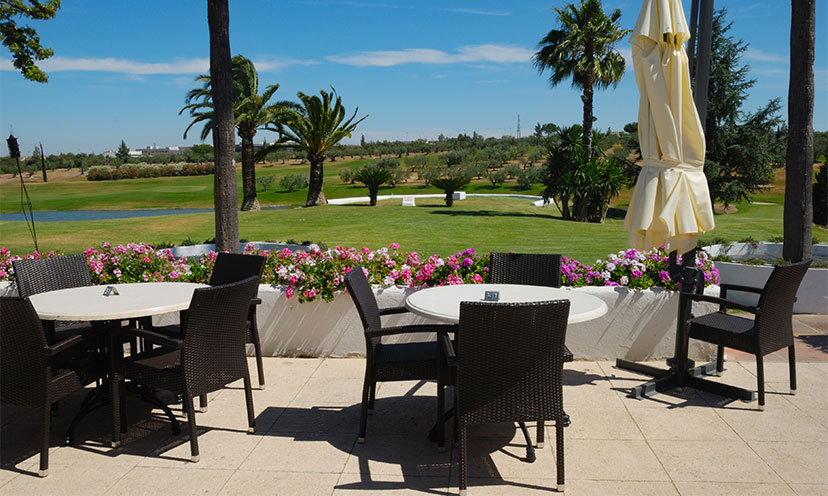Share This Article
When most people hear “country club,” they picture stuffy old men in plaid pants discussing stock portfolios over martinis. But here’s something that might surprise you – 73% of country club members surveyed by the National Golf Foundation say they joined primarily for family activities and social connections, not just golf. The modern country club is less “Great Gatsby” and more “upgraded community center that happens to have a golf course.”

Amenities Breakdown: From Dining to Fitness and Everything Between
Sure, course access is the marquee benefit, but the amenities list reads like a luxury resort brochure.
Most country clubs offer:
- Dining facilities ranging from casual grills to fine dining restaurants; and some have both!
- Hotel and resort accommodations at affiliated properties or on-site lodging, often with member discounts of 20-40% at luxury destinations.
- Fitness centers with personal trainers, group classes, and pools
- Tennis and pickleball courts with professional instruction
- Event spaces for weddings, business meetings, and private parties with discounts off public rates
- Kids’ programs including summer camps, swimming lessons, and junior sports leagues
- Social events like wine tastings, live music, and holiday celebrations
- Reciprocal networks give you access to up to 200 clubs worldwide for golf, lodging, and dining privileges while traveling
The average member uses non-golf amenities 60% more frequently than golf facilities, according to recent club industry surveys. Translation: even if you’ve never held a golf club, there’s plenty to justify membership.
For the Golfers: Course Perks That Elevate Your Game
While non-golf amenities draw many members, golfers, of course, get exceptional value from course-specific benefits that public players rarely experience:
- Unlimited range access with complimentary practice balls (saving $10-15 per session at public ranges)
- Professional instruction often included in membership or available at member rates 40-50% below market pricing
- Priority tee times and advance booking privileges, sometimes up to 30 days ahead of public reservations
- Pristine course conditions maintained year-round with dedicated groundskeeping staff
- Pro shop discounts typically 10-20% off equipment, apparel, and accessories
- Member tournaments and leagues providing competitive play and handicap tracking
- Guest privileges allowing you to bring friends at reduced green fees
- Practice facilities including putting greens, chipping areas, and sometimes short-game courses
The average avid golfer spends $2,400 annually on green fees and range time at public courses. Club members often break even on golf costs alone while enjoying significantly better course conditions and exclusive access. For serious golfers, the course benefits can justify membership costs even without other amenities.

Regional Personalities: Where Culture Meets Clubhouse
Country club culture varies widely by region, and understanding these differences helps set expectations:
Northeast: Traditional and formal, with emphasis on heritage and established protocols. Jacket-required dining rooms are common, and networking tends toward business connections.
Southeast: More relaxed but still relationship-focused. Family-oriented with strong emphasis on hospitality. Think bourbon tastings and crawfish boils alongside tennis tournaments.
West Coast: Casual luxury with environmental consciousness. Many clubs feature organic menus, sustainability initiatives, and laid-back dress codes. Business networking happens as well as more casual socializing.
Midwest: Community-centered with Midwestern friendliness. Value-focused pricing with emphasis on family activities and seasonal events that bring everyone together.
Southwest: Resort-style amenities with year-round outdoor focus. Pool scenes rival those of high-end hotels, and social calendars pack outdoor events and fitness activities.
The Social Return on Investment
The networking aspect isn’t just corporate schmoozing – it’s genuine community building. Members report:
- Business opportunities: 43% of members say they’ve gained clients or partnerships through club connections
- Friendships: The shared space and common interests create natural relationship-building opportunities
- Family benefits: Kids develop social skills interacting with others in a new setting
- Convenience factor: Having a “go-to” place for celebrations, date nights, and family activities eliminates decision fatigue
The Money Talk: What You’re Really Looking At
Country club membership costs vary dramatically based on location and exclusivity level. Here’s the realistic breakdown:
Metropolitan Areas (Major Cities)
- Initiation fees: $25,000 – $150,000+
- Monthly dues: $400 – $1,200
- Premium clubs in places like Manhattan or Beverly Hills can exceed these ranges significantly
Suburban Markets
- Initiation fees: $5,000 – $50,000
- Monthly dues: $200 – $600
Smaller Cities/Rural Areas
- Initiation fees: $1,000 – $15,000
- Monthly dues: $150 – $400
Membership Types Matter Most clubs offer multiple tiers: full golf memberships cost the most, while social memberships (dining and amenities only) typically run 40-60% less. Young professional memberships often provide discounted rates for members under 40.
Is It Worth the Price Tag?
The math depends on your lifestyle and priorities. If you’re already spending $300+ monthly on dining out, gym memberships, and entertainment, club membership can actually provide better value while elevating the experience.
The Bottom Line
Modern country clubs have evolved from exclusive enclaves to community hubs. For active adults seeking social connection, upscale amenities, and family-friendly activities, membership can provide genuine value beyond the prestige factor. The key is finding a club whose culture matches your personality and whose price point aligns with your budget.

